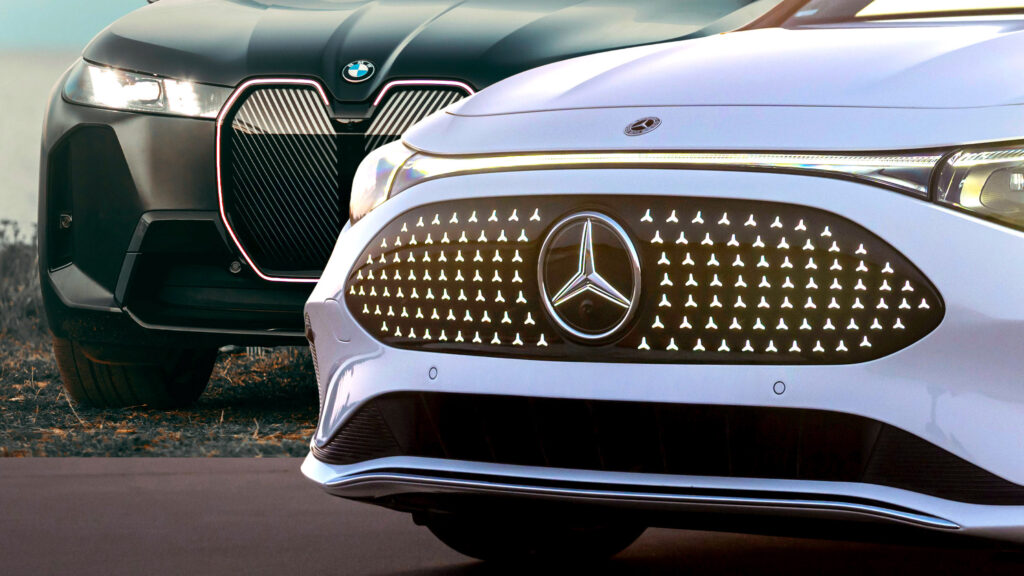BMW M’s iX3 Is Hiding Something Under Its Hood

- M-tuned BMW iX3 prototype caught testing with upgraded components.
- Lowered suspension, larger wheels and beefier brakes hint at its performance.
- An iX3 M60 could debut next year followed by a full-blown iX3 M in 2027.
BMW seems quite content with the early reception of the Neue Klasse iX3, and development is already pressing ahead on new versions of the electric SUV. Some of these will naturally lean hard toward the sharper end of BMW’s performance range, shaped by the M division.
More: BMW Is Cranking Out Cars “Like Pretzels” And Says Even China Can’t Keep Up
Our photographers recently caught a performance-focused iX3 prototype testing on public roads near the Nürburgring. Compared with earlier development cars, this M-badged version looks further along, wearing components that appear nearly production-ready.
What’s BMW Testing Here?
BMW is believed to be preparing not one but at least two M versions of the iX3: an M Performance model expected to carry the iX3 M60 nameplate, and a full-blown iX3 M.
It’s not clear which variant was on test here, though the prototype’s sculpted hood, featuring what appear to be vents, hints that this could be the higher-performance M model.
SH Proshots
That raised section on the hood may serve as either an aerodynamic channel or a cooling duct. If so, because the standard iX3 includes a front trunk, BMW could be trading some of that storage space for M-specific power electronics and/or cooling.
Moving down from the hood, the front bumper sports a more aggressive design than the optional M Sport Package already offered for the standard iX3, though it avoids looking excessive.
There are also new side skirts and lower bumper extensions, with the front likely to reveal larger air intakes once the camouflage comes off. Subtle fender flares and a fresh set of five-spoke alloy wheels give the prototype a more athletic posture.
SH Proshots
At the back, this test car omits the optional spoiler extension shown at the IAA Mobility show in Munich but gains sharper contouring around the bumper.
A redesigned diffuser with a central opening rounds out the treatment, suggesting BMW is leaning toward functional restraint over visual drama, though the final design could still change as testing continues.
More: The Electric M3 Ushers In A New Era Of BMW Design
Beyond the visual tweaks, the SUV will also benefit from a sharper chassis setup for improved handling. The camouflaged prototype appears to ride on a lowered suspension and features larger perforated disc brakes.

How Much Power?
The German carmaker typically introduces M Performance variants first, followed by full-blown M models. The iX3 M60 is expected to debut next year, likely featuring dual electric motors with output comfortably above the 463 hp (345 kW / 469 PS) of the iX3 50 xDrive, possibly pushing past the 600 hp mark.
BMW officials have already confirmed that their pure M electric cars will use a setup with four motors governed by an electronic control unit named the “heart of joy.” In theory, this architecture could deliver up to 1,341 horsepower, though that won’t apply to the iX3 M or its sibling, the i3M.
A more realistic figure for the iX3 M would be in the 700 to 800 hp range, with room for higher-output variants later on, perhaps including a Competition model that edges closer to 1,000 hp.
Don’t expect to see the iX3 M reach showrooms before 2027.
